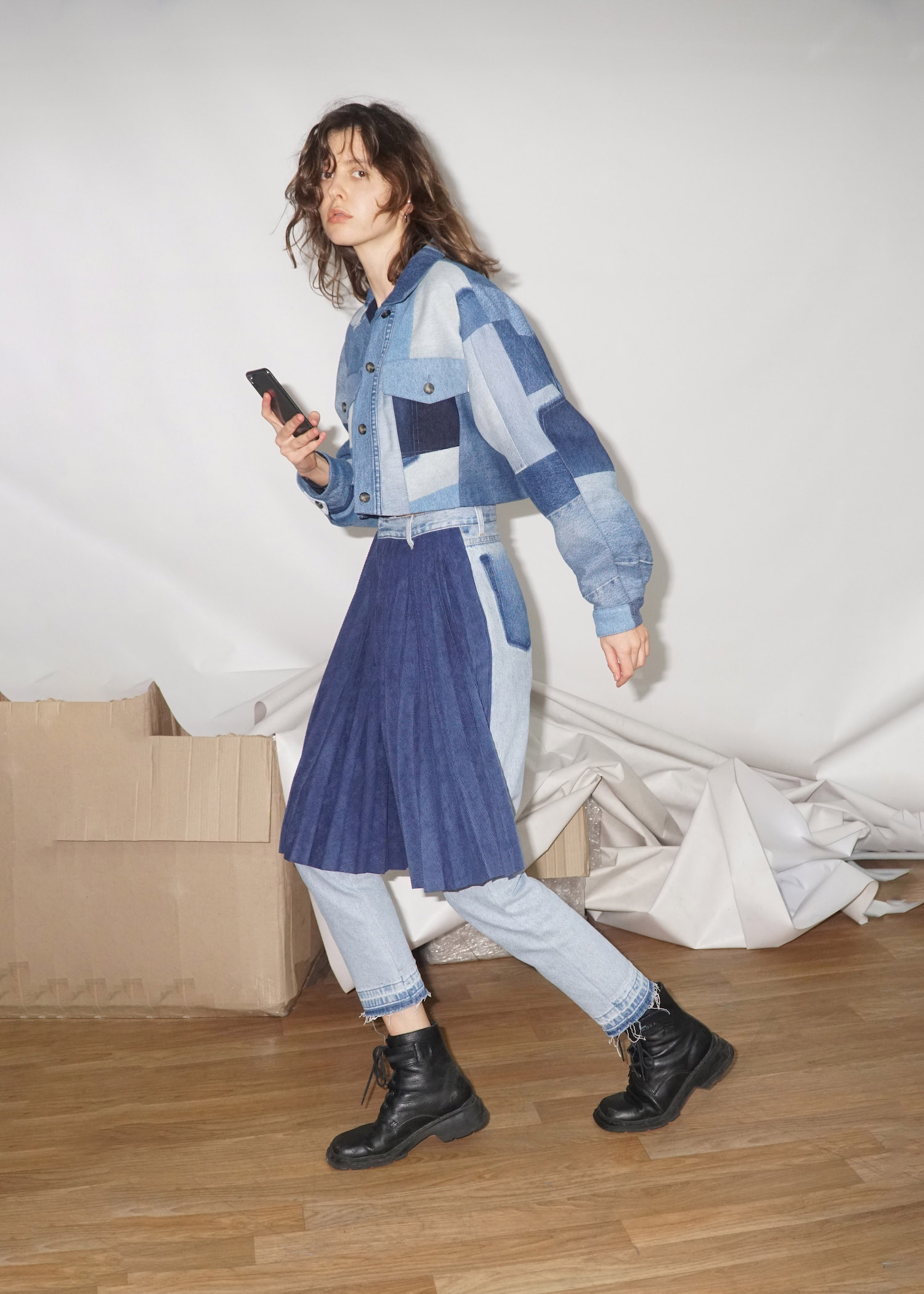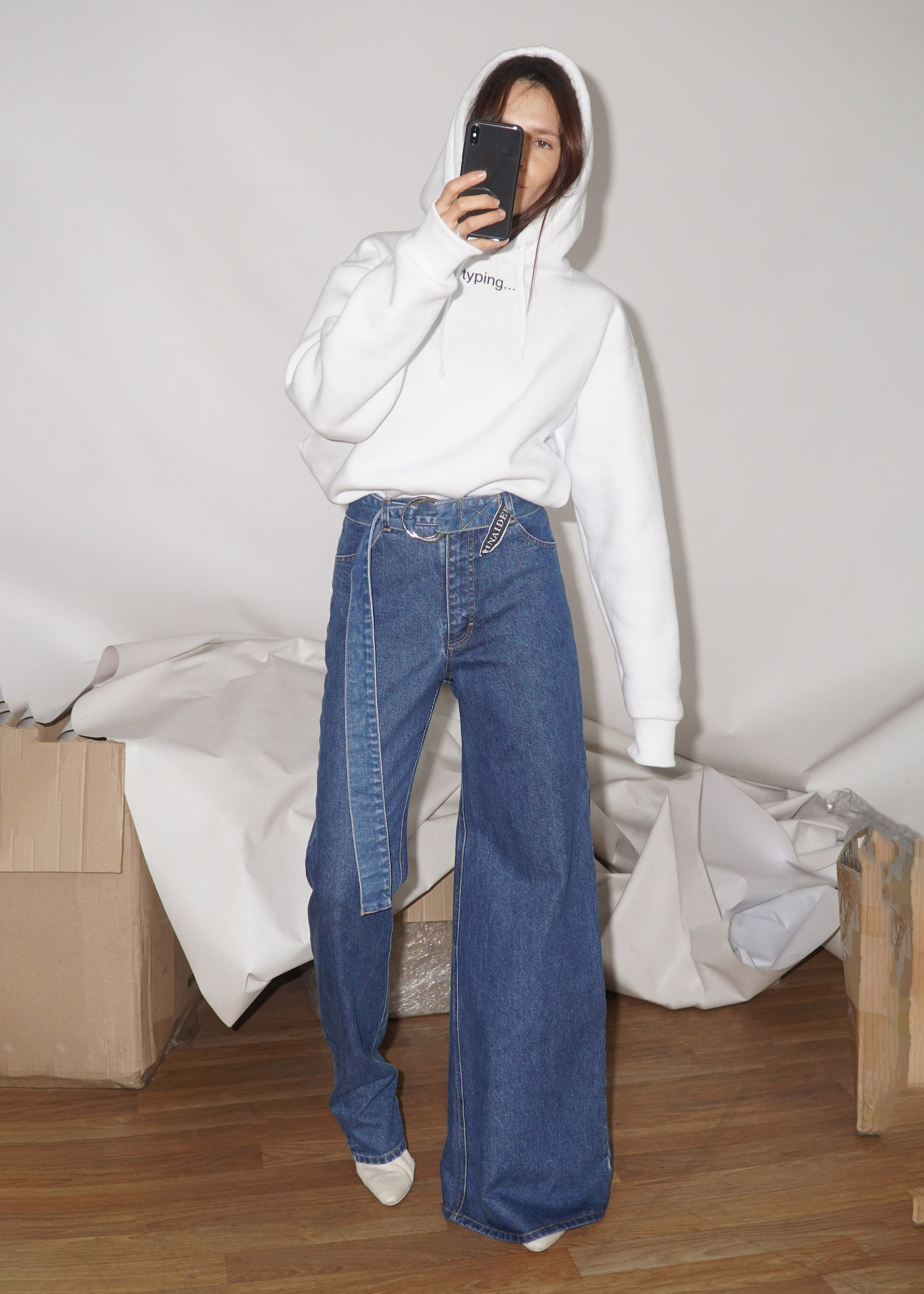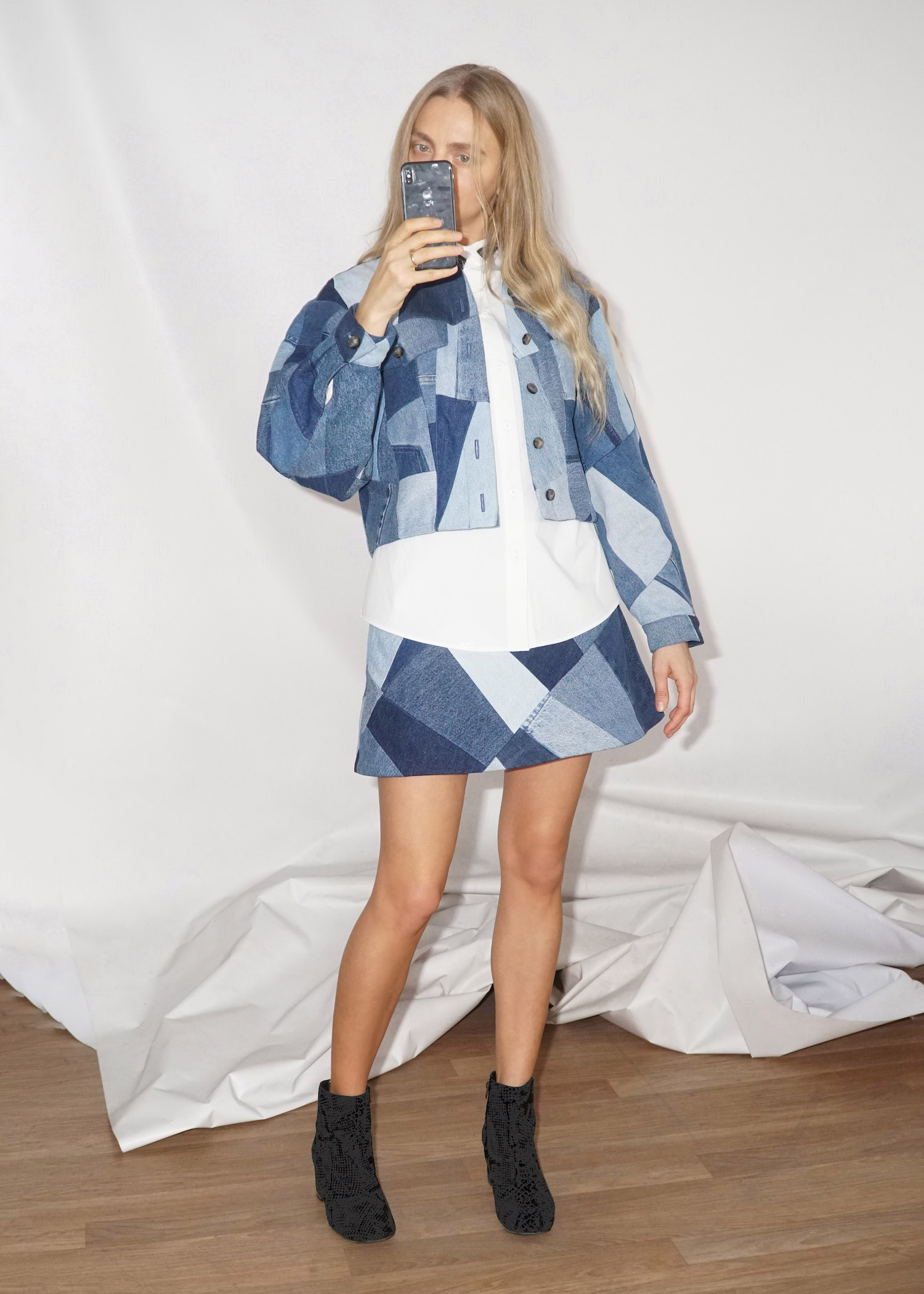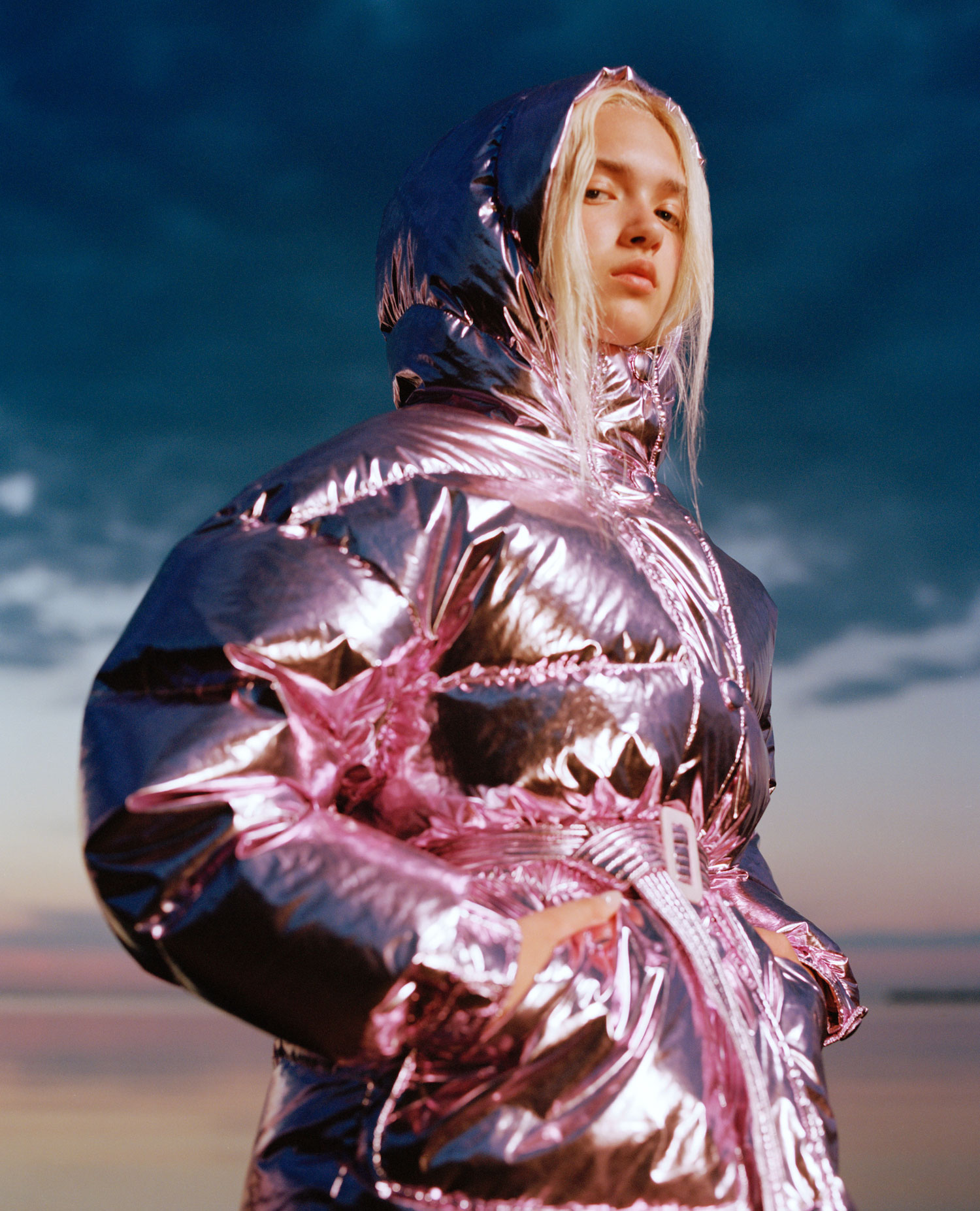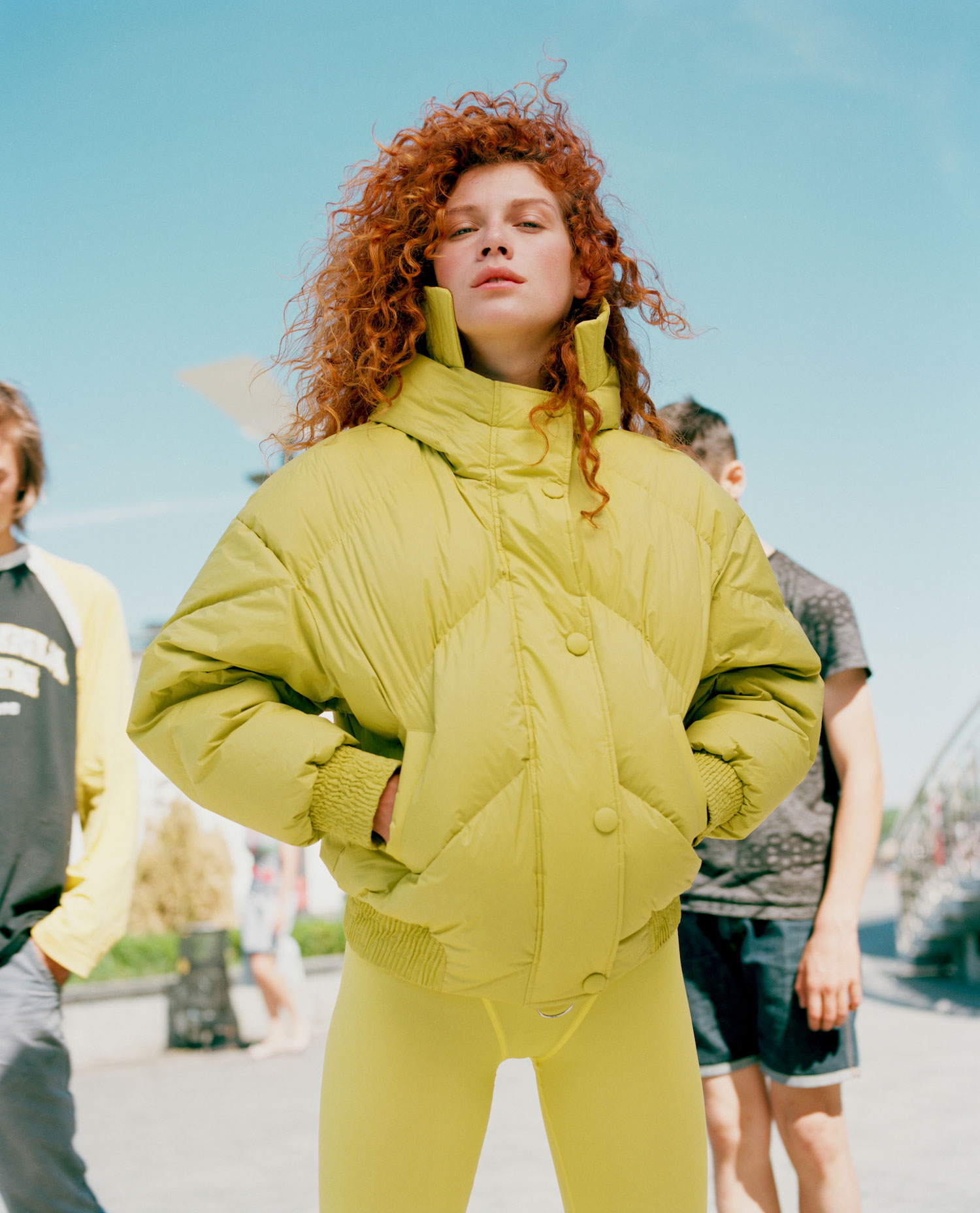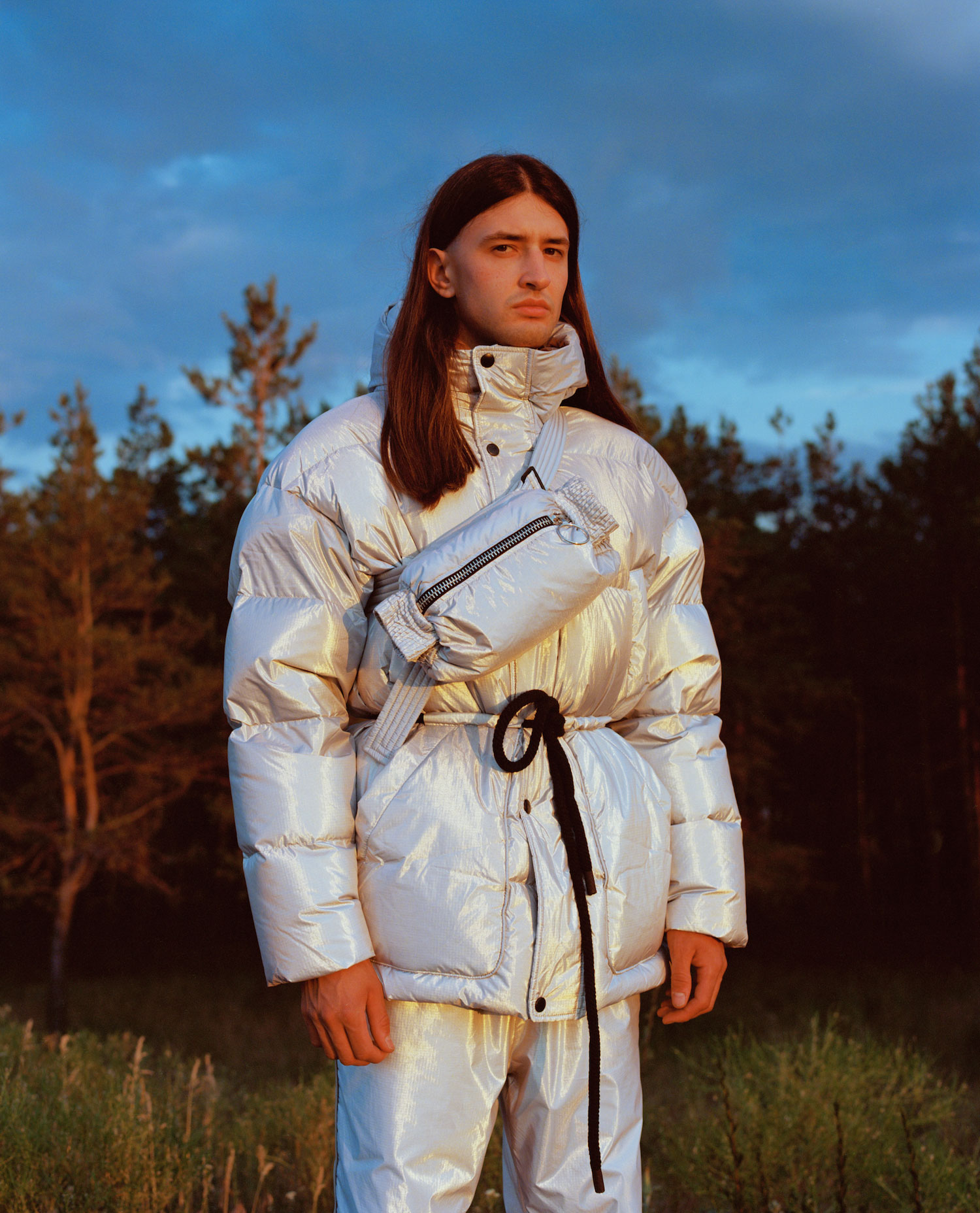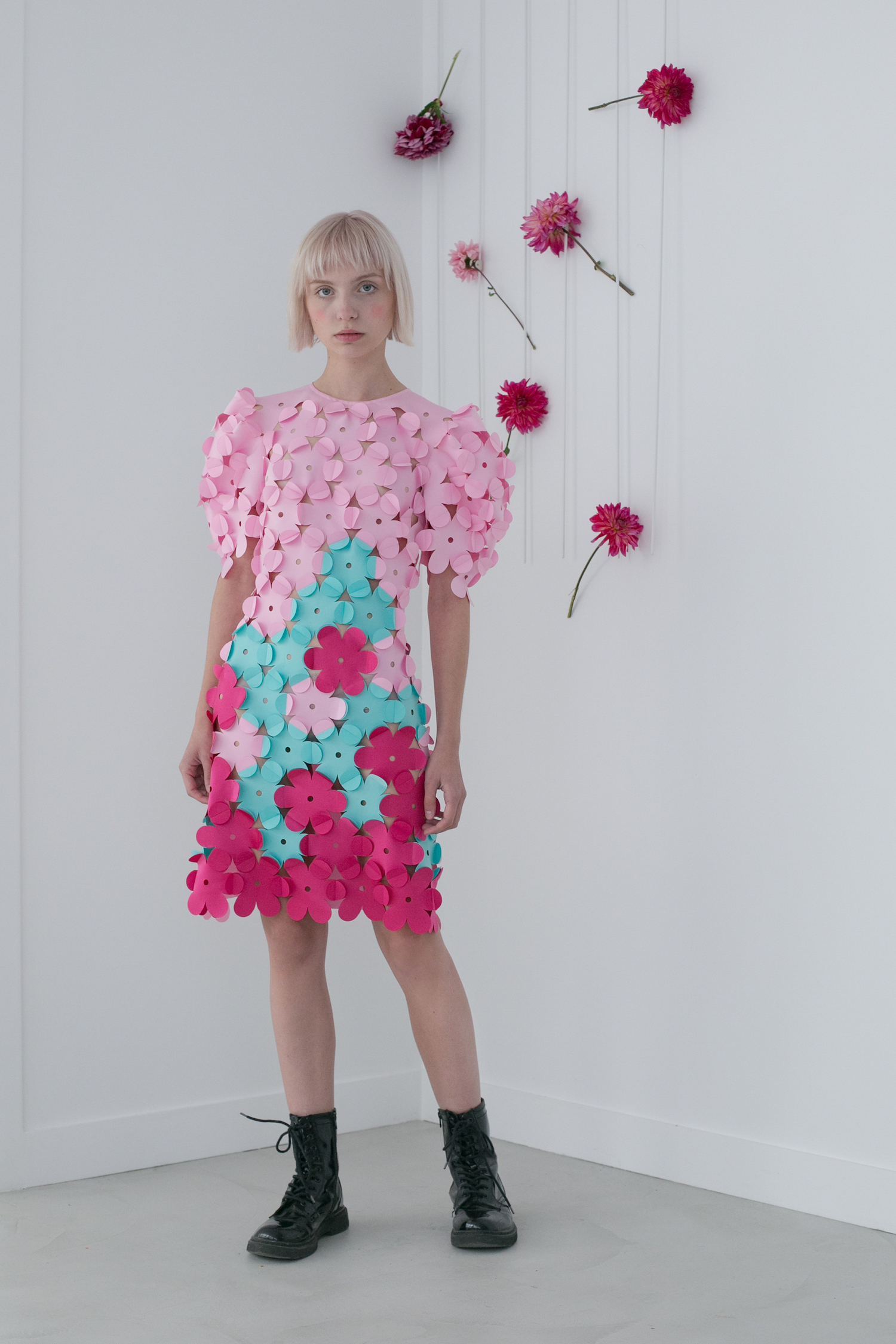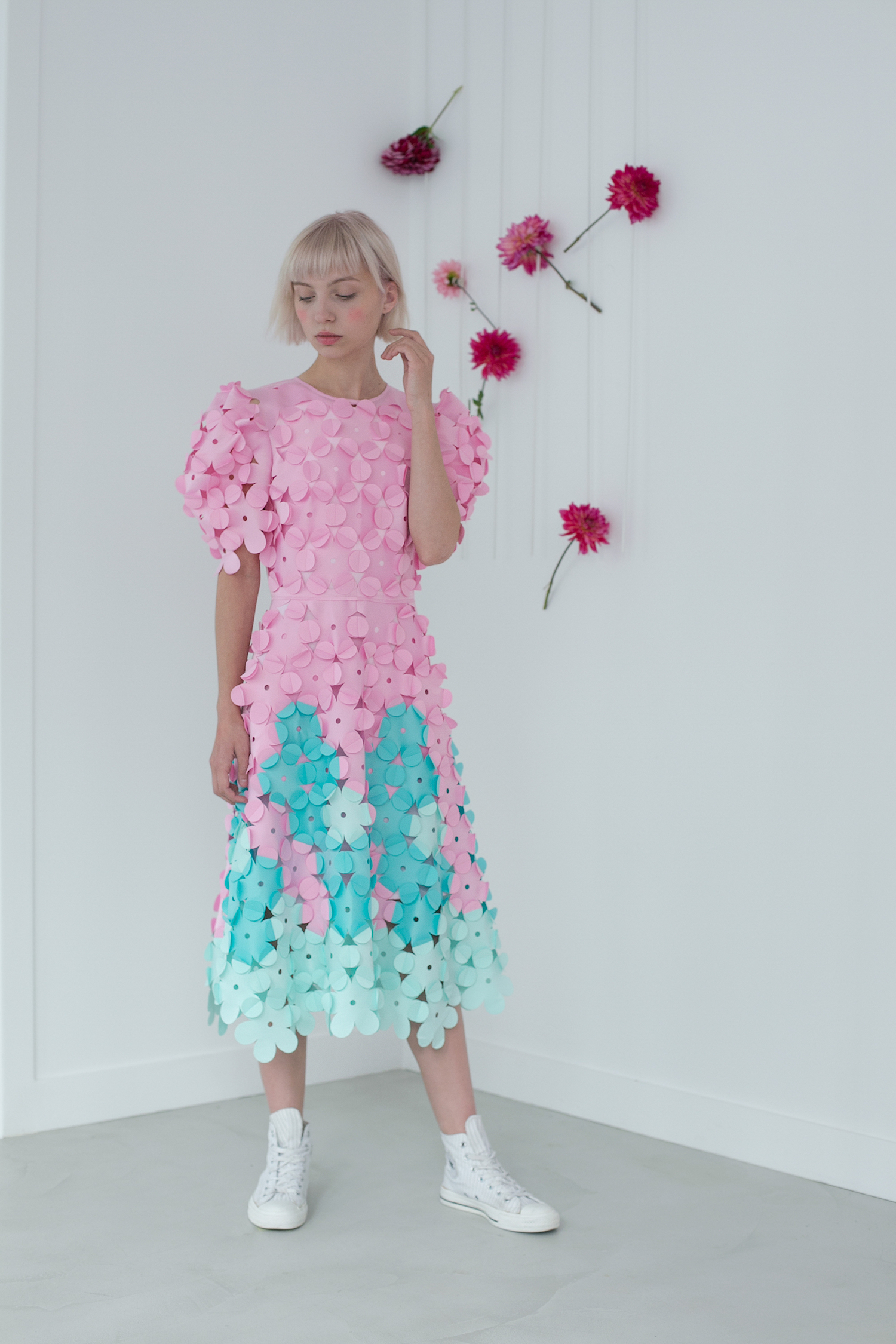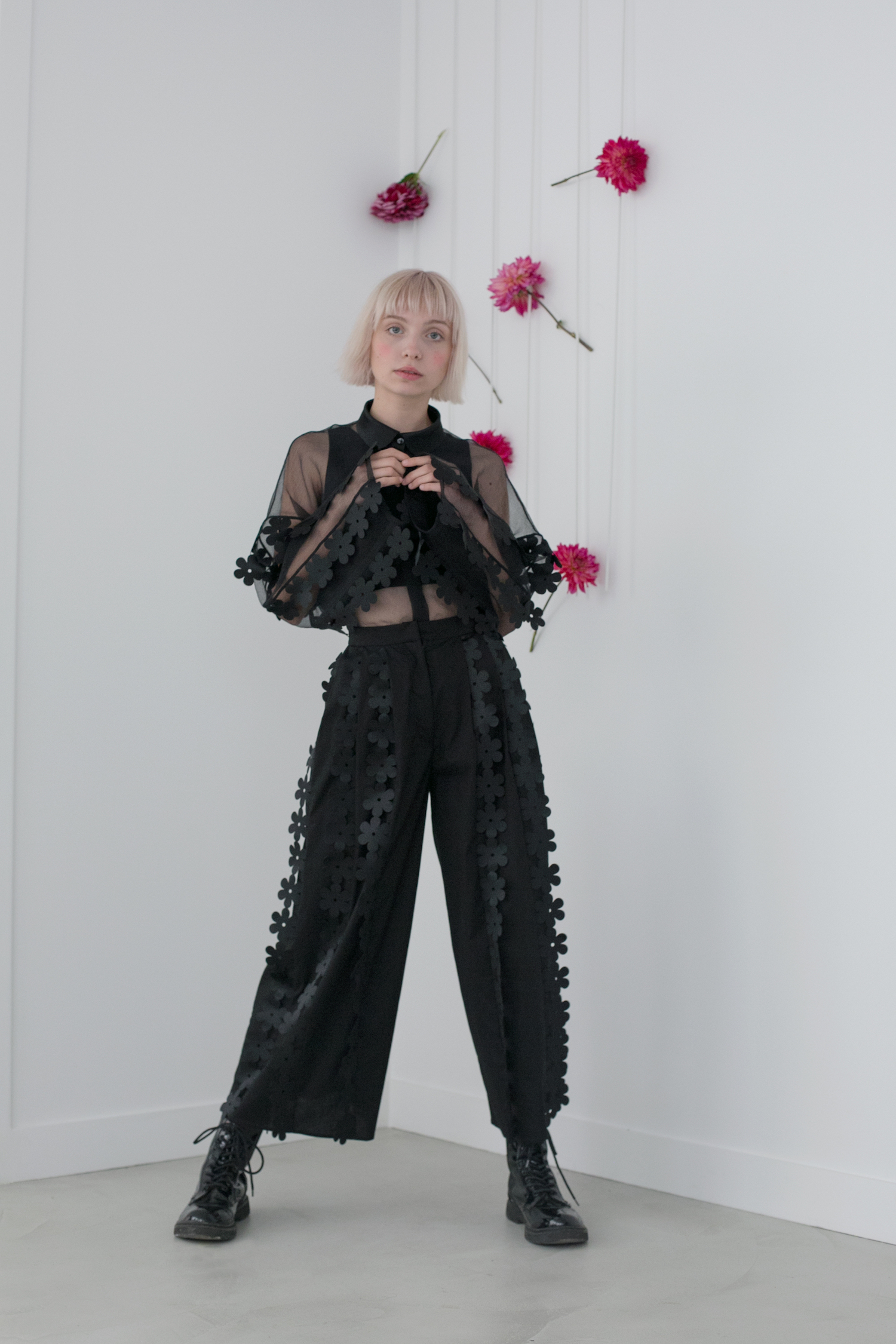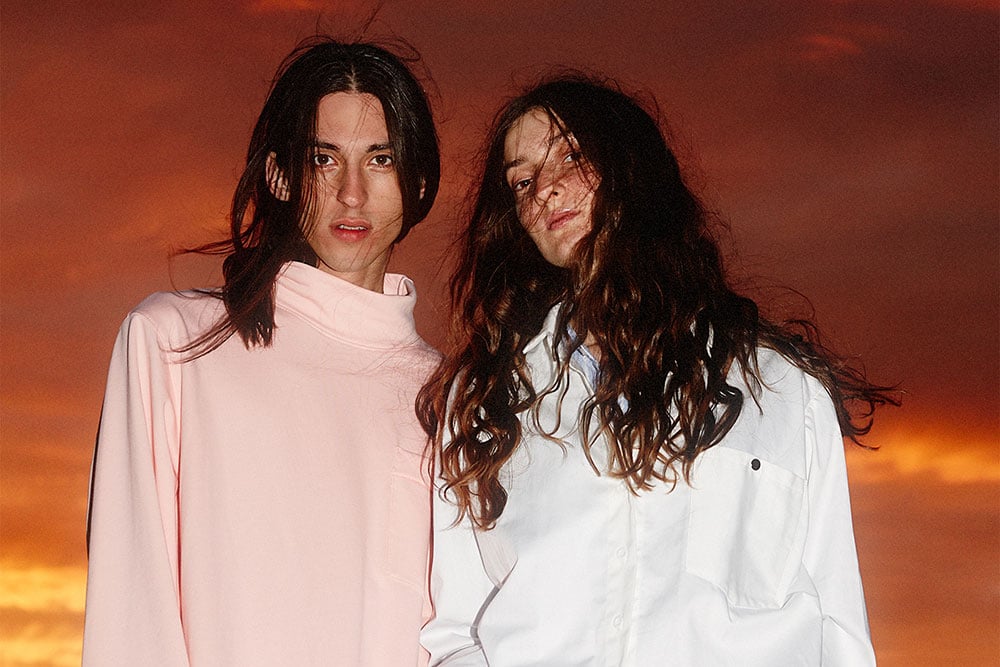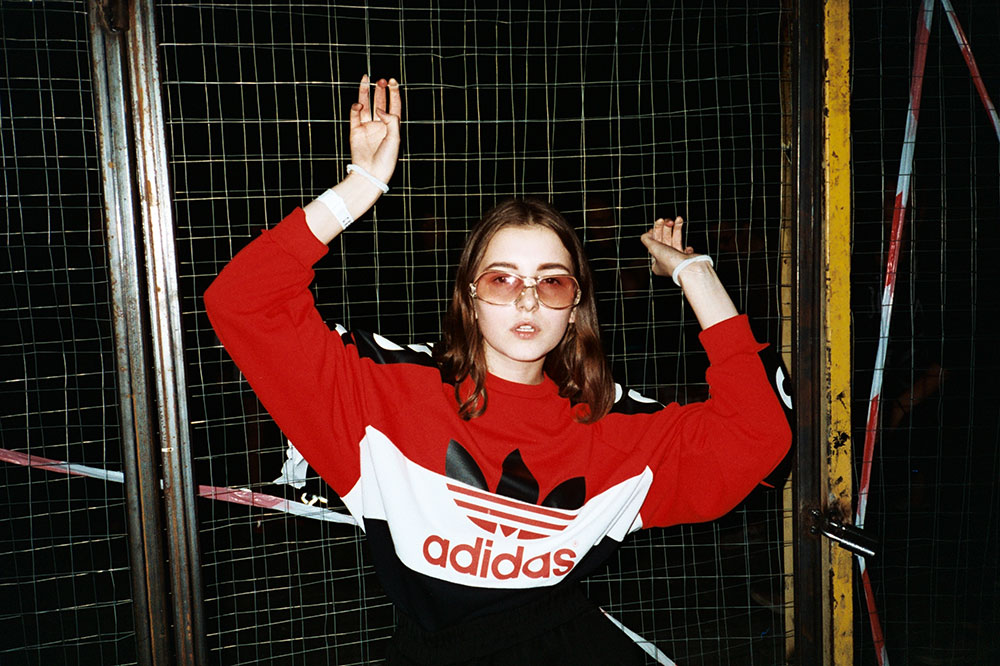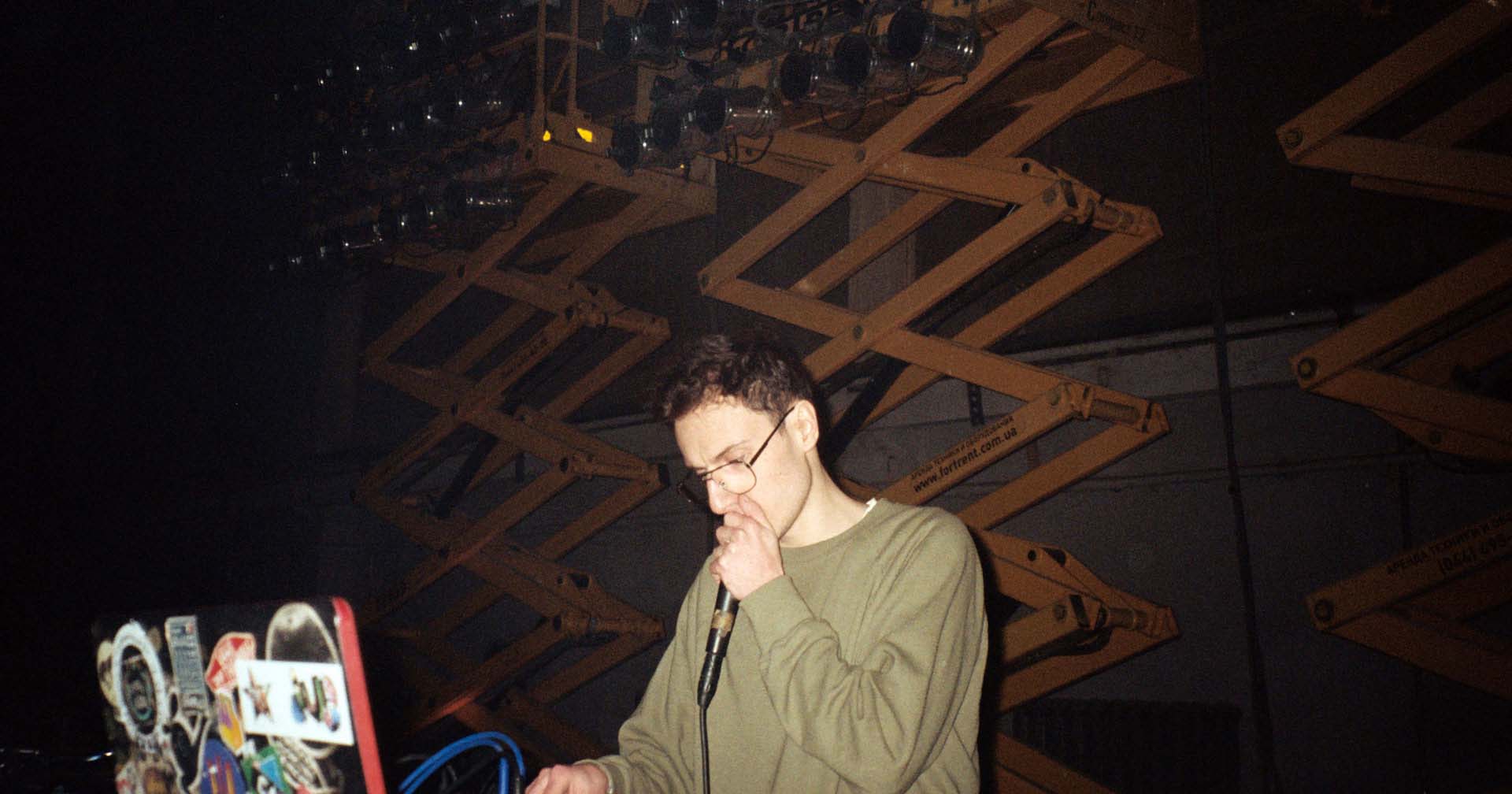Ukrainian fashion brands are everywhere. What is driving their success?
Kiev is a city that brims with a quirky blend of eagerness, hope, and savvy. But beyond tales documenting its status as a new fashion frontier, little has been written regarding as to how its vibrant creative scene keep ticking over.
I first travelled to Kiev last September to join the mass of ‘converted’ culture journos, writing home to preach the gospel of its effervescing fashion scene. Magazines such as i-D, The Guardian, and Dazed, have all been singing the high praises of Instagram-savvy underground designers like Masha Reva, Yulia Yefimtchuk and Anton Belinskiy, all cast against a backdrop coloured by CXEMA, sprawling dormitory districts, and the Lesnaya flea market. But it’s a desperately inaccurate depiction of the reality of Ukraine’s fashion sector. In fact, it’s beyond this romanticised underground scene that some of the country’s most commercially successful brands lie, with the likes of Ienki Ienki and Paskal stocked on some of the most coveted store floors worldwide. It’s their success that’s catalysing the development of an increasingly self-sufficient production infrastructure, from which all designers in the scene benefit.
But which of these elements is most crucial in assuring the development of the scene at large: cultishly cool creativity, or commercial clout? And perhaps more crucially, in a country whose GDP per capita stands second only to Moldova in the unenviable running for Europe’s lowest, who’s buying?
Among Kiev’s commercial runaway successes are widely acclaimed denim mavens, Ksenia Schnaider. Between Ksenia and her husband Anton, the brand has spawned viral hit after another in the form of ‘demi-denims’, ‘denim fur’, and, most recently for Pre-Fall ‘19, ‘assymetric jeans’, helped in no small part by the frequent papping of their pieces on celebrities like the Hadid sisters and Dua Lipa. Ksenia notes that, as one might expect, this seal of approval has brought about a “significant increase in the number of orders”, particularly among an international audience, with this increased demand allowing for the opening of specialised “tailoring studios adapted to working for designers, rather than just for mass production.” But Ksenia is quick to note that the brand owes its swiftly found success as much to Ukraine’s freshly-acquired status in the global fashion community as to its string of glitzy endorsements.
Ksenia Schnaider, significant a cog as it may be, is but one of many in the country’s accelerating fashion machine. None, however, can compare in size to the scene’s veritable blockbuster, Ienki Ienki. Founded in 2016 by Dmitriy Ievenko—one of five Ukrainian citizens in the Business of Fashion magazine’s prestigious BoF 500 — the brand’s high-end goose-down jackets proudly hold their own on rails from Selfridges to Barneys to Lane Crawford. Their formula? A product line comprising deceptively simple, alterable silhouettes, available in both a permanent and a seasonal selection of materials and colours. You’d almost think there was a catch, were it not for the impeccable craftsmanship invested in each and every piece. What’s more, the brand’s entire operation, from start to finish, is situated in Ukraine, something that Dmitriy says to have been “a goal from the beginning. I never even considered the idea of producing my brand [abroad].”
By working with the local clothing manufacturing industry — which has otherwise developed slowly since the country’s independence — Ienki Ienki has been a key changemaker in the gradual galvanising of higher-end domestic production. A wish to showcase the fashion manufacturing potential of his country aside, his decision to produce exclusively in Ukraine was also born of the fact that “producing in Europe while you work in Ukraine is very expensive,” while, “production in China is only a good decision if you’re selling your product in China,” owing to difficulties in overseeing the end-to-end process, and exchange rate fluctuations. At the end of the day, it’s just “cheaper now to base production in Ukraine”: as they say, the simplest reasons are often the best.
“Local customers aren’t ready to support brands”
They may hold true for the specific needs of one brand; they do not, however, necessarily apply for all. Julie Paskal is an architect-turned-designer responsible for her namesake brand, highly regarded for its delicate formalism and laser-cut detailing. But such specific techniques require specific skill sets — ones which few of the country’s production outlets have yet to acquire. “It’s very hard, for example, to find a good quality knitwear or denim manufacturer at a reasonable production cost,” she says. Difficulties increase exponentially when requirements extend to shoes or accessories.
Ienki Ienki AW 18 lookbook
Julie’s testament to the difficulties faced by the country’s designers is symptomatic of the wider issues at hand. Kiev, despite its ubiquitous sense of keep-calm-and-carry-on, is hardly set within a context that typically invites the development of a commercially viable fashion centre. Ukraine continues to exist in a state of relative political and diplomatic turmoil, with relations with its neighbour to the east frozen far from an entente cordiale. Cut off from any customs union, designers must stump up exorbitant tax bills when importing materials, and then there’s the matter of the poor to non-existent governmental support. “Despite the fact that fashion brings a good chunk of foreign attention to Ukraine, the government just doesn’t seem to care,” declares Ksenia. In her eyes, fashion designers in Ukraine are viewed “like weeds.” But like weeds, the country’s designers have managed to grow against and in spite of the challenges posed by an explicitly hostile environment, finding their way into store floors the world over, season-on-season. Which means that somebody must be buying—but who?
“Due to globalisation and digital progress,” responds Dmitriy, “the clients of higher-end Ukrainian brands are the same clients of higher-end Italian, French or American brands,” which you’ll notice by sneaking a peek at the price tags—if you’ve come to Kiev expecting clothes at the bargain value of the metro, prepare to sulk. After all, these brands operate “in the same competitive conditions as all other brands in the world,” — something that becomes glaringly evident on Dmitriy’s revelation that 95 percent of Ienki Ienki’s sales are international.
That’s not to say there’s a shortage of places to splash the cash in Kiev: on a cobbled stretch just off Khreshchatyk, the city’s main drag, lie any number of Kering and LVMH-owned boutiques, as well as Helen Marlen, a local high-end department store. There’s also Asthik nearby, initially founded by Ievenko, which was tipped by the BoF as one of the “top 10 influential retailers outside the four fashion capitals”. Yet the overwhelming focus of all these shops is on international brands. Paskal, for example, a brand once stocked at Colette, is carried by a single Ukrainian retailer, Atelier 1, “a very conceptual store with a specific customer,” says Julie.
The grounds for this disparity between domestic and international sales is most obviously due to a lack of local purchasing power, with what little there is held in the hands of a very select few. Julie, for one, notes that “unfortunately, the majority of customers in Ukraine are wives of oligarchs and politicians,” that generally “don’t want to pay the same price for a product made in Ukraine as they would for the product of foreign luxury brand.” She doesn’t, however, neglect to mention the growing proportion of “self-made businesswomen supporting local designers in buying their products.” Dmitriy also focuses his response on the latter demographic, pointing to a steady positive trend among domestic consumers towards high-end Ukrainian brands.
The conversation thus far has centred on brands that enjoy wide ‘mainstream’ success, but, as with any scene, emerging or established, the underground also plays a crucial role drawing attention to, and fuelling, a city’s creative spirit.
One Kiev standard-bearers is the earlier-mentioned Yulia Yefimtchuk, a cult favourite for her explorations on Soviet propaganda. Her SS19 collection draws upon the theme of ‘labour’, where crossed-hammer insignia abound. The brand’s severity, poise and politically interrogative spirit, diffused via publications like 032c and Sleek, as well as design studio Metahaven, have earned Yulia a switched-on base of fashion-savvy fans: especially in East Asia, where Hong Kong’s Lane Crawford and numerous stores across Korea and Japan stock the brand. Like Julie Paskal, she professes that her disproportionate international success is due to the lack of a domestic middle class. “Local customers aren’t ready to support brands,”she says, justifying her decision to focus exclusively on expanding her international reach.
There is, however, a further aspect that draws heightened attention to Yulia’s niche of the market: though perhaps unfairly, it’s often conflated with a romanticised image of a uniformly ‘post-Soviet’ Ukrainian youth. “This is true,” affirms Yulia, “but of course, it’s not a full image of the style on Kiev`s streets,” with Julie Paskal going a step further to say that such perceptions have “shaped the image of the country as a post-soviet cradle of desperate teens.” Both, however, acknowledge the importance of the visibility this new wave of attention has brought, attracting prominent stylists and photographers to the country, and exposing the world to a more representative breadth of Ukraine’s fashion creatives.
Tempting as it may be to polarise the scene—mainstream/underground; commercial/creative—its relatively small size makes collaboration a necessity for its survival. “I wouldn’t split us into two camps,” contests Julie, when asked about what I ignorantly assumed to be a firm delineation between relatively distant sides of Ukraine’s fashion equation. “We all started together and still help each other a lot. For example, Anton Belinskiy and photographer Armen Pasadanov shot our PS18 campaign; in turn, we have helped Anton with [the One Day Project],” a designer-led initiative in which Yulia has also taken part.
Ienki Ienki AW 18 lookbook
And there’s also the socio-historical thread of the 2014 Maidan revolution, binding the scene tighter than ever before. “I was shortlisted for the first LVMH Prize and while making the collection I was calling my friends when they were on the infamous streets, participating in demonstrations and volunteering; I heard explosions and shouts over the phone,” recalls Julie. “The night before the showroom in Paris, I painted posters for demonstrations with my mother’s friend who hosted us. I discussed politics with Anna Wintour at the LVMH cocktail party, and then we learned that Russian ships had entered our waters. Nobody got scared, everyone continued to work towards achieving their goals — this is the biggest victory of the revolution! [...] Our studio mechanic spent exactly one month on the barricades, and his wife volunteered in Odessa, while being our only pattern-cutter at the time.”
With this in mind, perhaps the success of Ukraine’s fashion business relies less on a toss up between commerce and creativity, but rather on the resilient interdependence of the two.
